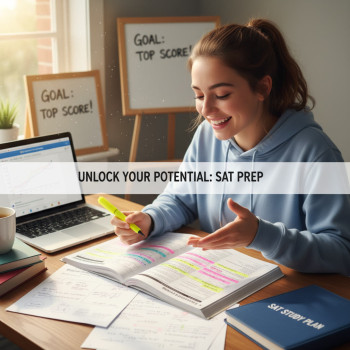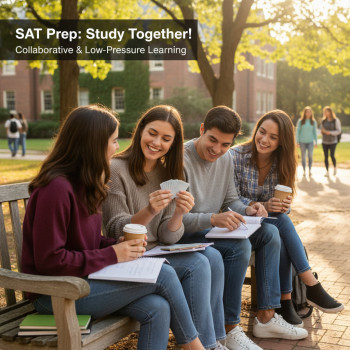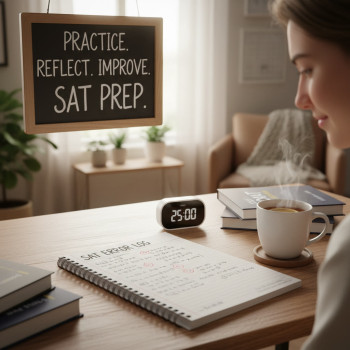Why snacks matter for your Digital SAT study — and how they actually help
When you’re deep in practice sections or grinding through adaptive digital practice tests, snacks can feel like a tiny lifeline. But snacks aren’t just comfort — they’re part of your study strategy. The right snack at the right time can help steady blood sugar, sharpen focus, reduce test-day jitters, and even make long study blocks feel more manageable. Conversely, the wrong snacks — heavy, sugary, or greasy — can leave you foggy, tired, and demotivated.
This post is a friendly, practical roadmap for building healthy snack habits tailored specifically for students preparing for the Digital SAT. You’ll get science-backed ideas (kept simple), realistic snack combos, sample schedules, and small rituals that turn eating into a study advantage rather than a distraction.
Think like an athlete: snack strategy for study endurance
Top performers in any field treat practice like a sport. You wouldn’t sprint a marathon without fueling properly — the SAT is similar. Think in terms of energy, focus, and recovery:
- Energy: steady fuel to power concentration (complex carbs + some healthy fat or protein)
- Focus: nutrients that support brain function (omega-3s, antioxidants, B vitamins)
- Recovery: small snacks to reset between study blocks so you don’t crash or overeat later
These goals shape the snack combos recommended below.
Principles of a great study snack
Before specific ideas, here are four simple principles to follow when choosing a study snack:
- Balance: pair carbohydrates with protein or fat to avoid blood sugar spikes.
- Portion control: smaller, regular snacks keep energy steady and prevent overeating.
- Low-sugar: avoid pure-sugar treats right before a practice test — the crash is real.
- Easy to eat: minimal mess and fuss so you can return to studying quickly.
Smart snack building blocks
Mix and match from these building blocks to create snacks you actually enjoy and that keep your brain working.
- Complex carbs: whole-grain crackers, oatmeal, whole-grain bread, brown rice cakes.
- Lean proteins: Greek yogurt, cottage cheese, turkey slices, hard-boiled eggs, nut butter.
- Healthy fats: nuts, seeds, avocado, olive-oil-based dips.
- Antioxidant-rich fruits: berries, apple slices, oranges.
- Veggies for crunch: carrot sticks, cucumber slices, cherry tomatoes.
- Hydration: water, herbal teas, or lightly flavored water — dehydration hurts focus.
Easy, SAT-friendly snack combos
Here are simple pairings that follow the principles above and are perfect for study sessions or the hours before a practice test.
- Apple slices + 2 tablespoons almond butter
- Greek yogurt with a sprinkle of walnuts and a few berries
- Whole-grain crackers + hummus + cucumber slices
- Rice cake + mashed avocado + cherry tomato halves
- Handful of mixed nuts + a small banana
- Hard-boiled egg + whole-grain toast soldiers
- Carrot sticks + tzatziki or a small portion of guacamole
Photo Idea : Cozy study corner with a balanced snack plate (Greek yogurt, berries, nuts) and a laptop open to a Digital SAT practice test
When to snack: timing strategies for peak focus
Timing matters as much as what you eat. Here are three practical timing strategies, depending on your study plan.
1. For short practice sessions (30–60 minutes)
If you’re doing focused 30–60 minute study bursts, snack only if you’re hungry. Choose small items that won’t create a mess: a few nuts, half a banana, or a small yogurt. The goal is a quick steady snack, not a mini-meal.
2. For full-length practice tests (3–4 hours)
Simulate test day: plan a solid pre-test breakfast and bring two small on-the-go snacks for breaks. Avoid sweets that spike blood sugar.
- Pre-test (60–90 minutes before): bowl of oatmeal with fruit and a little nut butter, or scrambled eggs with whole-grain toast.
- Break snack 1 (mid-test): handful of nuts + a clementine.
- Break snack 2 (later break): small hummus-and-cracker pack or a rice cake with peanut butter.
3. For long study days (several hours of mixed work)
Plan 2–3 small snacks between meals to avoid dips in energy. Keep snacks visible and pre-portioned so you reach for the healthy choice automatically.
Sample weekly snack schedule
This sample schedule balances variety, nutrition, and convenience. Use it as a template and swap items to match your tastes and any dietary needs.
| Day | Morning (pre-study) | Midday (short break) | Afternoon (study block) |
|---|---|---|---|
| Mon | Oatmeal + berries | Apple + almond butter | Greek yogurt + walnuts |
| Tue | Whole-grain toast + avocado | Carrot sticks + hummus | Handful mixed nuts + banana |
| Wed | Scrambled eggs + toast | Cottage cheese + pineapple | Rice cake + peanut butter |
| Thu | Greek yogurt + granola | Orange + string cheese | Trail mix (nuts + seeds + dried fruit) |
| Fri | Smoothie (spinach, banana, protein powder) | Celery + nut butter | Hard-boiled egg + whole-grain crackers |
Quick recipes and prep tips for busy students
Batching a few snack elements on Sunday can save time and support consistent choices during the week.
- Overnight oats jar — combine rolled oats, milk (or plant milk), a spoon of yogurt, a dash of cinnamon, and frozen berries. Make several jars at once.
- Snack boxes — portion out 1/4 cup nuts, a few crackers, and some dried fruit into small containers for grab-and-go energy.
- Veggie cups — slice carrots, cucumbers, and peppers and store in airtight jars with a small container of hummus at the bottom for dipping.
- Homemade trail mix — combine unsweetened cereal, almonds, pumpkin seeds, and a few dark chocolate chips for motivation without a crash.
Snack-proof your study environment
Good intentions fail when snacks are buried in wrappers or temptations lurk on the counter. Try these small environment tweaks:
- Keep measured portions ready in clear containers so you see and reach for the healthy choice.
- Have a designated snack shelf or drawer in your study zone; out of sight tends to be out of mind for less healthy options.
- Use small plates or bowls — they make portions feel more satisfying.
- Set an alarm or study timer that includes snack break reminders to avoid mindless grazing.
Mindful snacking: how to avoid grazing during study marathons
Mindless snacking is the enemy of productivity. When you graze, eating becomes background noise rather than a restorative pause. Here are ways to make snacking mindful:
- Pause the study. Seriously — put a bookmark, stretch, breathe, and eat your snack away from screens when possible.
- Set a 5–10 minute break timer for the snack; then get back to work. This treats the snack as a recharge, not an endless buffet.
- Notice how you feel after the snack: more alert, the same, or groggy. Use that feedback to refine your choices.
Test day snack checklist
On the Digital SAT day (or any practice test that mimics test-day conditions), use this checklist to avoid surprises:
- Eat a balanced breakfast 60–90 minutes before the test (protein + complex carbs + fruit).
- Pack two small, easy-to-open snacks and a bottle of water in a clear, test-allowed bag.
- Avoid new foods you haven’t tried before test day — test your snacks during practice tests instead.
- Bring napkins and small resealable packets for portion control.
Simple rules for experimentation and personalization
Everyone’s body reacts differently. Use practice tests as a laboratory:
- Try a snack combination during a full-length practice test to see how you feel.
- Keep a short log for two weeks noting what you ate and how it affected focus and energy.
- Fine-tune amounts, timing, and types — personalization is the point.
How nutrition ties into study efficiency and stress management
Healthy snacks aren’t a silver bullet for studying, but they support the foundations of learning: attention, memory, and mood. Stabilized blood sugar improves working memory; omega-3s support cognitive function; hydration affects alertness. Pairing good snack habits with proven study strategies — spaced practice, active recall, and realistic full-length practice tests — will produce much better results than either approach alone.
Also, consider the psychological benefit. Having a predictable snack plan reduces decision fatigue: one fewer small stressor means more mental energy for tough SAT questions.
Practical FAQs students ask
Q: Can I eat sweets during long study sessions?
A little is fine — an occasional small chocolate square or a cookie can work as a morale booster. But tuck sweets into short rewards rather than fuel. If you rely on sugar for quick energy, you’ll likely face a sharp crash during critical practice sections.
Q: What about caffeine?
Moderate caffeine can sharpen focus for short periods. But avoid experimenting with high doses before a practice test. Pay attention to timing — caffeine late in the day can disrupt sleep, and poor sleep undermines all study gains.
Q: Any vegetarian/vegan snack ideas?
Plenty: nut butter and whole-grain crackers, hummus and veggie sticks, tofu or tempeh cubes, chia pudding, and fortified plant-based yogurts all work well.
Combining personalized tutoring and smart nutrition for better results
Study techniques and nutrition work hand-in-hand. When you have a tutor or coach who understands your rhythm, they can help align study intensity with smart fueling strategies. For example, a tutor might schedule tougher problem sets when your energy tends to be higher and recommend specific snack pairings that keep you alert through those sessions.
If you’re using a personalized tutoring service like Sparkl, mention your preferred study windows and energy patterns. Sparkl’s 1-on-1 guidance and tailored study plans can integrate snack timing and break structure into your study calendar so you’re practicing under conditions that match your best mental state. Small changes like that — a tweak on when to take a break, or what to pack for a full-length practice test — can make study time more efficient and less stressful.
Real-world example: Mia’s snack plan for a 3-week SAT push
Mia had three weeks before her school’s SAT day. She noticed she hit a wall around 90 minutes into practice tests. Instead of pushing through with candy bars, she tried a new plan:
- Week 1: Recorded what she ate and how she felt for each practice session.
- Week 2: Switched to small protein-based snacks (Greek yogurt, protein balls) at 60–75 minute marks.
- Week 3: Practiced with full-length adaptive tests, packing a clementine and mixed nuts for breaks; coordinated tougher question blocks with her most alert hours (late morning).
Result: Mia reported fewer mid-test slumps, better concentration in the final 45 minutes, and less anxiety about snacks. She also worked with her Sparkl tutor to change the pacing of her sessions and to simulate test-day fueling — a change that made the real test feel familiar and manageable.
Common pitfalls and how to avoid them
- Pitfall: Leaving snacks to chance (ends in junk food). Fix: Pre-portion and schedule them.
- Pitfall: Trying a new snack on real test day. Fix: Test everything during practice tests.
- Pitfall: Thinking snacks replace sleep. Fix: Prioritize consistent sleep — snacks support, but don’t substitute for, rest.
Final checklist: build your personalized snack plan tonight
Spend 20–30 minutes this evening and you’ll save time and energy all week. Follow this checklist:
- Pick three go-to snack combos you like (one sweet, one savory, one protein-forward).
- Prep two days’ worth of portions in small containers or bags.
- Decide your study-break rhythm (e.g., 50/10, 90/15) and set timers.
- Try one snack during an upcoming practice test and log the result.
- If you have a Sparkl tutor, share your snack schedule and energy notes — they can adapt study intensity to match.
Parting thoughts: small habits, big returns
Healthy snack habits for SAT study are low-effort, high-impact. They reduce fog, boost stamina, and remove small but common distractions from your study routine. The best plan is the one you’ll actually follow — so pick snacks you enjoy, keep portions reasonable, and treat snack breaks as part of disciplined practice rather than a mindless habit.
If you pair these habits with a structured study plan and occasional personalized support, like Sparkl’s tailored tutoring and AI-driven insights, you’ll fold nutrition into a larger system that supports steady improvement. Study smarter, fuel better, and build confidence — one sensible snack at a time.













No Comments
Leave a comment Cancel